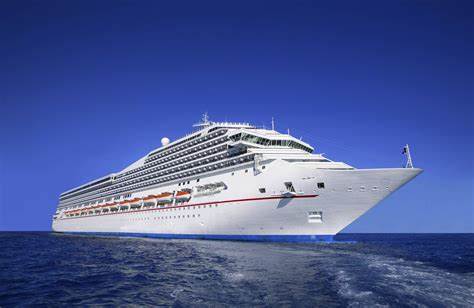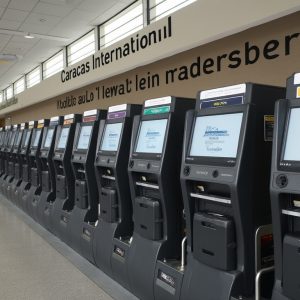“Twenty years from now, you will be more disappointed by the things you didn’t do than those you did. So throw off the bowlines. Sail away from safe harbor. Catch the wind in your sails. Explore. Dream. Discover.”
Mark Twain
“Land was created to provide a place for boats to visit.”
Brooks Atkinson
“How inappropriate it is to call this planet Earth, when clearly it is Sea.”
Arthur C. Clarke
The cruise was not my idea.
It was Ima’s.
I finally gave in.
And so, last week, we took the long drive down to Port Canaveral, Florida, and boarded Disney’s newest—and one of the world’s biggest and most expensive to build—cruise ship, the Wish. It was my first cruise and Imogene’s second. We met three of my four sisters (Vicki, Patti—Trish—and Katy) aboard as well as Trish’s daughter Amy, and her two young children Sierra and Sawyer.
My sisters, by the way, are seasoned veterans of Disney cruises.
Despite my original reservations, I had a fantastic time.
When Disney stays within Walt’s original parameters of providing family-oriented entertainment, it is at its best: when it strays into the wilderness of political correctness and the “woke” maze, it suffers. On the cruise ship, it was Disney at its best.
Of course, you pay for the quality of Disney service. I do not know how much the cruise cost (Ima wrote the checks) and I don’t want to know. All I know is I enjoyed every second of the experience.
My first impression of the Wish as we parked at the port was how immense it is! Disney’s newest addition to its cruise fleet of five is one of the world’s largest. The Wish is one of eleven cruise liners currently afloat that cost at least $1 billion to build.[1] The Wish, built in 2022 by Meyer Werft Shipyard in Papunburg, Germany, has a gross tonnage of 144,000, a length of 1,119 feet, and a capacity of 5,555.[2]
My fascination with large ships goes way back. As a child, my mom and dad would let me stay up late (one day a week) to watch a World War II-related black-and-white documentary. The show led to my passion for history. One of my favorite episodes was about the wartime sinking (actually scuttling) of the famous German battleship, Bismarck in late May 1941, during its only offensive (raiding) foray in the North Atlantic Sea. The warship, named after the legendary “Iron Chancellor” Otto von Bismarck, was envisioned as an answer to a new French class of battleships and nominally fit within the tonnage limit imposed by the Washington Naval Treaty. Bismarck’s keel was laid down in July 1936, it was launched in February 1939 and commissioned in late August 1940. The Bismarck was Germany’s largest warship and displaced more than any other European battleship (over 50,000 tons when fully loaded). The ship’s length was 823 feet, 6 inches—much shorter and smaller, by the way, than today’s Wish.
About that same time, as some of you may remember, there was a popular song by Johnny Horton, “Sink the Bismarck,” with an unforgettable refrain: “The Germans had the biggest ship, they had the biggest guns. The Bismarck was the fastest ship that ever sailed the sea, on her deck were guns as big as steers and shells as big as trees.” (1960)
One of my favorite Revell plastic models was the Bismarck.
By now, many of you can guess how my mind works. The entire time I was aboard, I was thinking about a plot for a future novel set on a cruise liner. I wondered what it would be like to set my characters on a future Chinese cruise ship. When I got back to the room at the beach, one of the first things I did was a bit of research on the Chinese cruise industry. As it turns out, they are way behind the West in this area. Indeed, China is in the final construction phase of the country’s first domestically built cruise ship at the Shanghai Waigaoqiao Shipbuilding yard. Currently, only known by its hull number H1508, the cruise ship is being built for Adora Cruises, a newly launched brand from the joint venture between Carnival Corporation and China State Shipbuilding Corporation (CSSC). Construction began in 2019.[3] Why has it taken so long? A recent article notes the problems Chinese shipbuilders have encountered: “cruise ships are among the most difficult and intricate vessels to build because of the vast range of systems involved. They require 20 times more man-hours to build than a typical Capesize bulker which is seen as one of the most basic shipbuilding products.”[4]
My second impression, once we were aboard the Wish, was how small but efficient our individual cabins were. Not an inch was wasted in the ergonomics planning (the process of designing or arranging workplaces, living spaces, or systems so they fit the people that use them). The bathroom consisted of a commode and sink; another compartment held a small tub, shower, and sink. There was just enough space for the bed, room to walk around it, closets, in-built refrigerator, a fold-out sofa, and drawers. Amazingly enough you never felt cramped.
Our cabin on the Wish eerily reminded me of the opening scenes of the dystopian novel by Ernest Cline, Ready Player One.[5] In the book, viewed by many futurists as a sneak preview of what the elites have in mind for the rest of us in the future, the protagonist teenager Wade Watts lives with his aunt in the cramped “stacks”—a poverty-stricken district in the 2040’s—where trailer homes have been piled on each other. As a result, the book’s characters escape this dismal reality by living (in avatars) in OASIS, a virtual reality alternative world.
What do I mean? We had the minimum space to live with a moderate degree of comfort, our food and other essential needs were provided, our information inflow was monitored and arranged, and our entertainment was orchestrated: throw in a government with an agenda and you have all the ingredients for absolute control. It has already been worked out.
“Sigh.”
My third impression was garnered because of time spent outside on the cabin’s veranda: the absolute limitless nature of the ocean and the mind-blowing scene of clouds on the horizon. I am always amazed at God’s creation (and man’s effort to demean, deny, undercut, and counterfeit it). Enough said.
My fourth impression is that Disney is unparalleled when it comes to providing customer services, food, and entertainment. In addition to lavish sit-down meals, I particularly enjoyed the hamburgers, hot dogs and fries at Goofy’s Grill on the eleventh floor. We also attended three shows in the main theater: “Disney Seas the Adventure,” “The Little Mermaid” and “Disney’s Aladdin—A Musical Spectacular” (where the genie absolutely stole the show). Just as interesting as the stage action were two nearby sign language specialists.
Perhaps it is worth noting at this point that there were a couple circumstances that prevented me from enjoying the cruise experience to its fullest. The week before boarding the Wish, I somehow contracted a major sinus infection that left me hacking, wheezing, and sneezing the entire time we were at sea. In addition, a couple days before the cruise, while I was running on the beach, I seriously tweaked my knee; as a result, I limped—carrying my one leg like Chester on Gunsmoke—the entire cruise. The combined one-two punch of sickness and a leg injury kept me aboard the ship during our port calls at Nassau in the Bahamas as well as a day of play on Disney’s proprietary island in the Caribbean.
I thank Ima, and my sisters, for putting up with me.
Finally, as I think back on the cruise, one of my biggest surprises was what it wasn’t. If I had projected, 5-8 years ago, and based on my belief in the exponential change rate of future technology, I would have quite honestly expected more whiz-bang stuff out of the world’s newest, one billion-dollar-plus cruise ship. Internet service was only available to those who paid for it; in-room television service was limited and the screen saver (of the Wish sailing through calm seas) featured only an occasional flyover by a Star Wars craft and a Spiderman flyby. There was no virtual reality to speak of, no humanoid robots cleaning rooms or serving meals, and very little evidence of AI-enhanced accouterments.
For some reason, I expected more of that.
As Timothy Lee notes in his sobering message to future technologists, “Software Didn’t Eat the World: A.I. Won’t Either”: “Many people now learn foreign languages using Duolingo or watch educational videos on YouTube. But people largely go the same schools and hospitals they did 10 or 20 years ago.”[6] I suspect the same truth applies to those who take cruises.
My mom, before she passed away, loved to go on Disney cruises with my sisters: she loved the human, personal touch provided by crew members serving meals and cleaning the rooms; she loved soaking in the vastness of the ocean waves and incredible cloud formations while sitting on the veranda; she loved spending intimate time with family; she loved dressing up for “Pirate’s Night”; she loved visiting exotic island locals and the live on-board musical productions. She loved being with people; and laughing with, and at, them. In large part, those are the same motivations that have drawn adventurers to board cruise ships for generations. I’m not sure advancing technology will ever really change that.
Having said that, however, there are some interesting techno-wrinkles on the horizon. I read recently, for example, about the upcoming three-year, round-the-world voyage of Ms. Sharon Lane, a 75-year-old retired schoolteacher, aboard the MV Gemini. To afford the trip, she has opted for one of the cheapest rooms on board—a “virtual inside” room—a 130-square-foot-cabin with no window, with a surround screen that will broadcast live footage from outside the ship.[7]
There you have it! I can’t wait for our next cruise!
[1] J. Souza, “$1 Billion Club: Most Expensive Cruise Ships Ever Built,” CruiseFever, Nov. 17, 2022. The record for being the most expensive cruise ship ever built now belongs to Alure of the Seas, built by STX Europe Turku Shipyard of Finland from 2007 to 2010 at a cost of $1.43 billion.
[2] For those of you interested, YouTube has a number of documentaries—including one by National Geographic—on the construction of the Wish.
[3] “China Begins 120-Day Countdown to Launch of Domestic Cruise Ship,” The Maritime Executive, Feb. 16, 2023.
[4] Ibid. The “Capesize” is the largest class of bulkship used to carry a variety of materials; it is so named because they are too large to pass through the Panama Canal and must go around the Cape of Good Hope.
[5] Ernst Cline, Ready Player One, Crown Publishing, 2011.
[6] Timothy B. Lee, “Software Didn’t Eat the World: A.I. Won’t Either,” SLATE, Apr, 24, 2023.
[7] Francesca Street, “She signed up to live on a cruise ship for three years. Here’s why,” CNN, Apr. 22, 2023. The “Life at Sea Cruise” cruise departs Istanbul this November, will stop at 375 ports, including 208 overnight stays, with stops ranging from Antarctica, China, India and Australia. The cost? Cheapest rooms, such as the one for Ms. Lane, runs about $30,000 per year.




